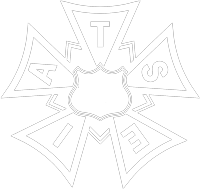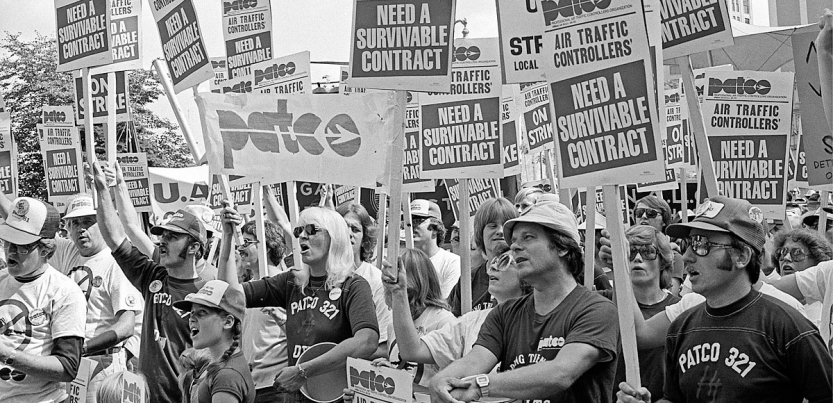As public sector unions contemplate losing key rights under the law, it’s worth remembering that for much of their history, such unions organized with no rights at all.
It wasn’t till 1958 that New York became the first city to authorize collective bargaining for city employees. Wisconsin did the same for state employees in 1959, and federal workers got bargaining rights in 1962.
Yet as early as 1940, a book titled One Thousand Strikes of Government Employees described strikes dating back to the 1830s, when workers at U.S. Navy shipyards stopped work multiple times to press demands for better wages and conditions.
The book, written by David Ziskind, a lawyer at the Department of Labor, actually identified 1,116 strikes, involving firefighters, teachers, sanitation workers, hospital workers, railroad workers, postal employees, printers, park laborers, bathhouse attendants, caddies at public golf courses, gravediggers, construction workers… the list goes on and on.
In short, collective action was a tradition for more than a century before the law began to catch up.
Public workers formed unions without waiting for legal recognition. For instance, letter carriers established the first postal union in 1889. The American Federation of Teachers formed in 1918, the same year that several independent unions of firefighters merged to form a national union. AFSCME was born in Wisconsin in 1932, the same year as the American Federation of Government Employees, a union of federal workers.
So take heart—history shows that workers can mobilize and organize even without cover of law.Public workers have done it time and again. Of course labor law matters, but it’s not the only thing that matters.
UNORGANIZABLE?
A related lesson is that even workers who are supposedly unorganizable can in fact organize.
Never was this more evident than among the unemployed workers who found jobs in public works during the Great Depression. Of the 1,116 strikes in Ziskind’s book, nearly 700 involved people working in New Deal programs.
These programs employed jobless people at subsistence pay. They provided only temporary employment; law dictated that these workers would be dismissed as soon as jobs became available in the private sector. And as public employees, the workers had no legal rights to collective bargaining.
Yet they did organize. On top of mobilizing hundreds of strikes, they built organizations. And they won concessions; construction workers, for instance, won shorter workweeks with no loss of pay.
Mostly these workers organized not through recognized unions but through local Unemployed Councils, Unemployed Leagues, and groups called Workers Alliances. In 1935-1936 these local groups merged to form the Workers Alliance of America, whose first convention brought together 791 delegates representing at least 200,000 workers.
Besides workplace fights, chapters of the Workers Alliance agitated for better relief provisions for jobless people and demanded that unemployed workers be recognized and respected as workers.
Along the way, the Workers Alliance also broke new ground in organizing united action by Black and white workers in the Deep South, where simply holding a racially integrated meeting was against the law.
In other words, this was what we would now call social justice unionism—worker organizing that combines militancy on the job with a fight for justice in the wider society. It went deeper than a reciprocal exchange of support between unions and community groups. The Workers Alliance recognized that causes beyond the workplace were crucial to its own members.
It’s no coincidence that this social-justice approach proved especially effective at organizing “unorganizable” workers. People presumed to be unorganizable have almost always been those without political clout—for instance, migrant workers, recent immigrants, African Americans in the Jim Crow South, and others ignored by lawmakers. For workers on the political margins, building power on the job was—and still is—inextricably knit up with struggles to assert their rights in society at large.
THE INSPIRING '60S

The growth of public sector unions after World War II exemplifies how labor and other movements for social justice can intersect.
In early December 1955, as the AFL and CIO were reuniting, their new president George Meany told the New York Times that it was “impossible to bargain collectively with the government” and that the AFL-CIO did not intend to reach out to workers in that sector.
But at the very same time, something else was happening that would have a much greater impact on public workers’ aspirations. Early December 1955 also marked the start of the Montgomery Bus Boycott, the leading edge of the direct-action Black freedom movement.
Campaigns for public employee unions and bargaining rights became part of this upsurge. The most famous example is the Memphis sanitation workers’ 1968 struggle for union recognition, which became Martin Luther King’s last campaign. But this was just one of many new AFSCME locals that Black workers organized during this period, including many sanitation workers.
Remember, this was a time when public sector wages and benefits were generally much lower than those in the private sector. Black workers were strongly represented in public employment, from the postal service to city hospitals. The upsurge in unionism became a boon to Black communities, bringing higher incomes and stronger job protections to more Black families.
Public unions and the Black freedom movement sometimes clashed. That was the case, for example, when the teachers’ unions in New York City and Newark, New Jersey, crossed swords with Black activists demanding community control of schools. But on the whole, public employee unions and the freedom movement inspired each other, especially in the South, even when they didn’t make common cause in formal ways.
This mutual inspiration goes a long way to explain the astonishingly rapid growth of public sector unions during the civil rights era. In 1960 just 5 percent of state, county, and municipal workers were union members—but by 1966, the figure had jumped to 25 percent. The lesson here: labor can draw real strength from alliances with other movements for social justice.
And once again, while changes in law helped to set the stage, union growth did not proceed in the orderly way the law dictated. More often than not, the same laws that granted public workers the right to collective bargaining barred them from going on strike—but a great many strikes took place nonetheless.
In 1958, public workers across the U.S. staged just 15 strikes. Ten years later in 1968, they staged 411 strikes; in 1969, 412. Throughout the 1970s, public employees averaged 375 strikes a year.
Only in the 1980s did this strike wave end, after President Ronald Reagan fired 11,000 striking air traffic controllers and banned them from federal employment for the rest of their lives.
REAGAN LOOKS TAME
Many private sector employers emulated Reagan’s move, breaking strikes by hiring permanent replacements. But today, assaults on public sector unions have risen to levels that were unimaginable even in the worst days of the Reagan era.
After the air traffic strikers were permanently replaced, their union, the Professional Air Traffic Controllers Organization, was decertified. But in 1987, the replacement workers and subsequent hires formed a new union—the National Air Traffic Controllers Association, now affiliated with the AFL-CIO. The Reagan administration immediately recognized it and began to bargain with it.
Not even Ronald Reagan ever challenged public workers’ fundamental right to collective bargaining—as Republicans are now doing in state after state. In fact, in 1968, when he was governor of California and already the darling of the Republican Party’s right wing, Reagan signed a law that gave collective bargaining rights to California’s public employees.
Today’s round of assaults on public unions is something new and more extreme. Figures like Wisconsin’s Governor Scott Walker, Ohio’s Governor John Kasich, and Maine’s Governor Paul LePage make Reagan look like a pussycat.
The challenges we face today are unprecedented in our lifetimes. The other side is not looking for compromise or halfway measures. They’re not going after just the militant unions, for example; they’re coming for all of us. As we go into battle, public sector unions would be wise to draw on the unruly and inclusive spirit of the generations that came before.
Priscilla Murolo teaches history at Sarah Lawrence College and in the Union Leadership and Activism program at the University of Massachusetts.

